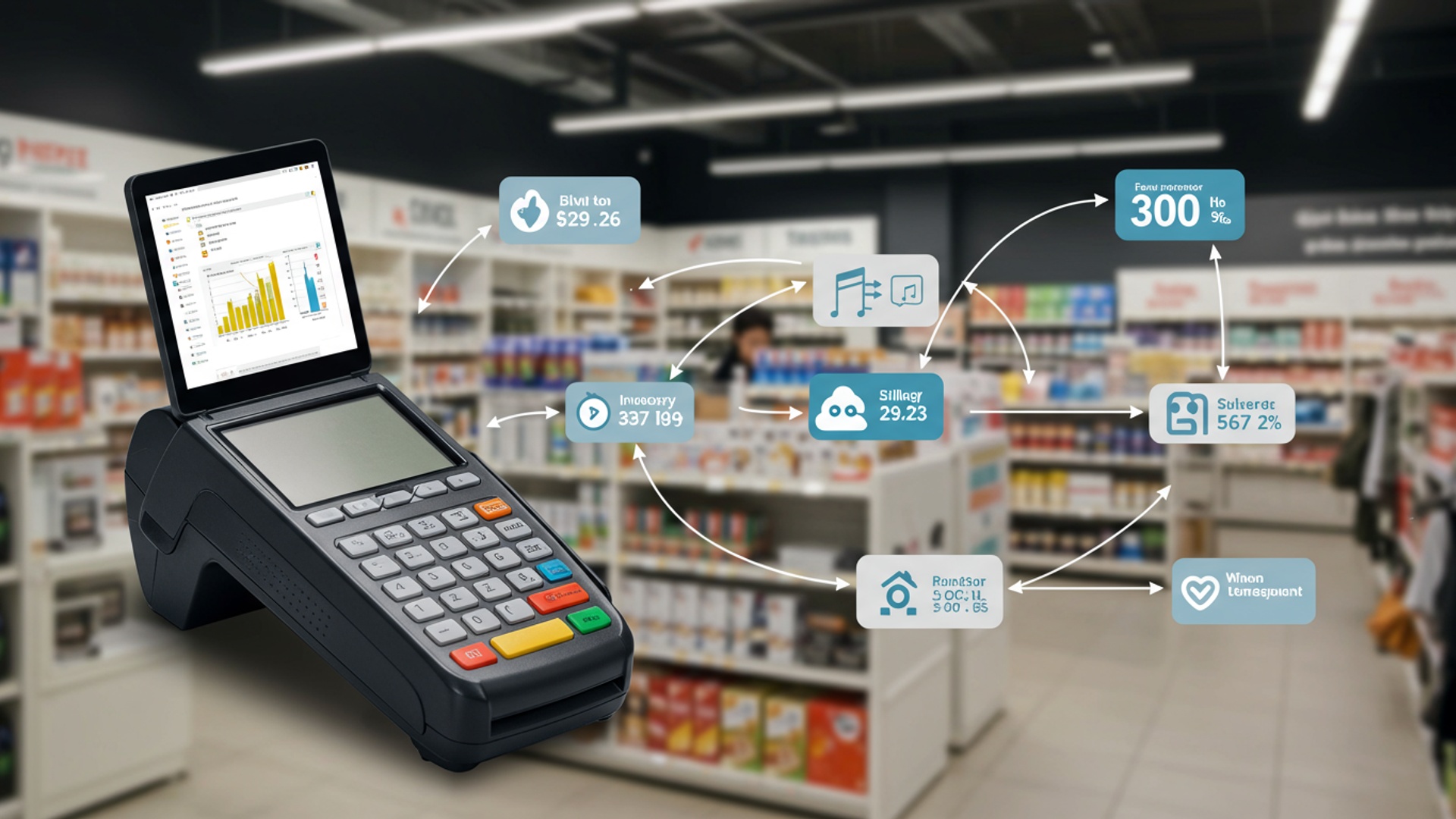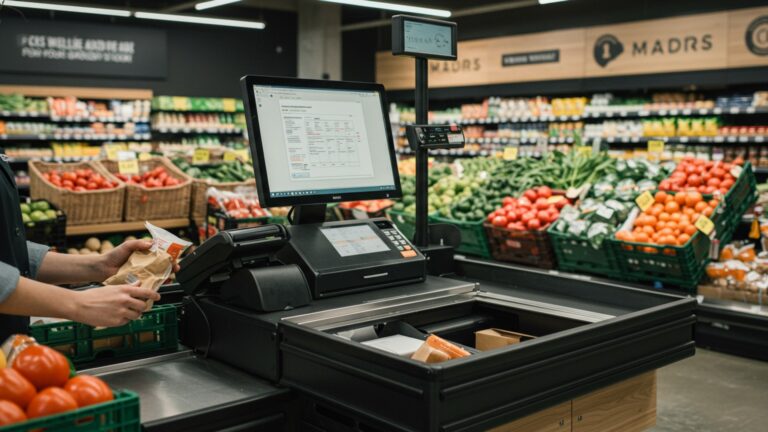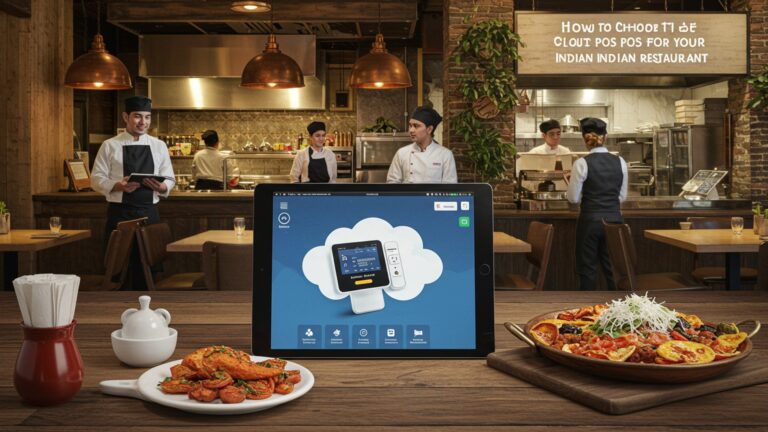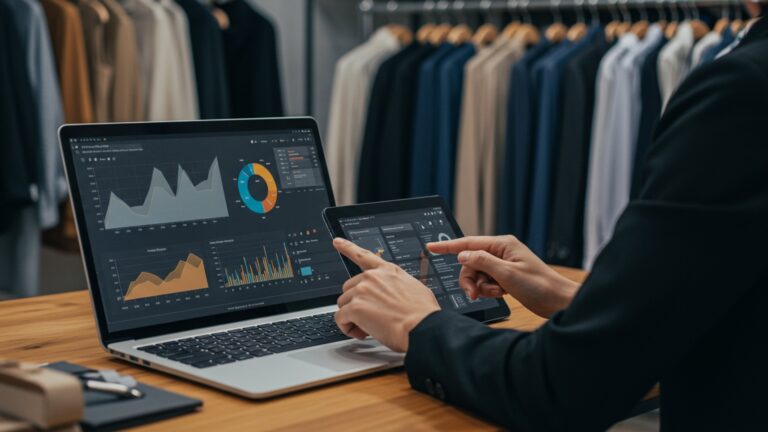How to Streamline Billing and POS Software for Efficient Sales and Inventory Management
In an era where customer expectations for seamless experiences are paramount and supply chain disruptions are a persistent threat, businesses can no longer afford fragmented sales and inventory operations. Manual data entry and siloed systems often lead to costly stockouts, inaccurate financial reporting. extended checkout times, directly eroding profitability and brand loyalty. Modern billing and POS software fundamentally transforms these challenges into opportunities, integrating every transaction, from order to final payment, with real-time inventory insights and comprehensive sales analytics. This unified approach not only accelerates checkouts and minimizes human error but also empowers data-driven decision-making for optimal stock levels and personalized customer engagement, essential for thriving in today’s dynamic marketplace.

Understanding the Core: The Synergy of Billing and POS Software
In today’s fast-paced business environment, efficiency is not just a buzzword; it’s a necessity for survival and growth. At the heart of a streamlined operation for any retail, hospitality, or service-based business lies the effective management of sales and inventory. This is where the power of integrated billing and POS software truly shines. But what exactly are these systems. why is their seamless operation so crucial?
What is Billing Software?
Billing software, at its essence, is a digital tool designed to manage the financial transactions between a business and its customers. It automates the process of generating invoices, tracking payments, managing credits. often handles recurring billing. Beyond simple transaction records, modern billing software can often integrate with accounting systems, provide detailed financial reports. ensure compliance with tax regulations. Its primary role is to ensure that every service rendered or product sold is accurately accounted for and billed, providing a clear financial trail.
What is POS (Point of Sale) Software?
Point of Sale (POS) software is the central hub where sales transactions are completed. Think of it as the digital cash register. infinitely more powerful. A robust POS system allows businesses to process sales, accept various forms of payment (cash, credit cards, mobile payments), print receipts. manage customer returns and exchanges. Beyond the checkout, advanced POS software often includes features like inventory lookup, customer loyalty program management. employee time tracking. It’s the front-line tool that directly interacts with customers and records every sale as it happens.
The Crucial Link: Why Integration Matters
While billing software handles the financial ledger and POS software manages the direct sales interaction, their true power is unlocked when they function as a single, unified system. Imagine a scenario where a sale is made through the POS. the inventory isn’t automatically updated, or the financial record isn’t immediately passed to the billing system. This creates data silos, manual reconciliation nightmares. a host of inefficiencies. Integrating billing and POS software means that every sale recorded at the point of sale instantly updates inventory levels, generates a financial record for billing. captures valuable customer data. This integration is the bedrock of efficient sales and inventory management, minimizing errors, saving time. providing a holistic view of your business operations.
Why Integration is Key: The Power of a Unified System
The decision to integrate your billing and POS software isn’t merely about convenience; it’s a strategic move that fundamentally transforms how your business operates, leading to significant gains in efficiency, accuracy. profitability. Without a unified system, businesses often grapple with a multitude of challenges that can hinder growth and customer satisfaction.
Overcoming Common Challenges of Disconnected Systems
- Manual Data Entry & Errors: Operating separate systems for sales and billing necessitates manual data transfer, leading to typos, omissions. reconciliation headaches. This consumes valuable staff time and introduces a high risk of error, impacting financial accuracy and inventory counts.
- Data Silos & Inconsistent data: When sales data resides in one system and financial data in another, it creates “data silos.” This makes it incredibly difficult to get a real-time, accurate picture of your business performance. Inventory levels might be outdated, sales reports might not align with billing records. customer details could be fragmented.
- Slow Processes & Reduced Customer Satisfaction: Manual processes slow down everything from checkout to order fulfillment and financial reporting. A customer waiting longer at the register or facing issues due to incorrect stock insights is a dissatisfied customer, directly impacting repeat business.
- Inefficient Inventory Management: Without real-time updates from your POS to your inventory system, you risk overstocking slow-moving items or, worse, running out of popular products. This leads to lost sales, wasted capital. frustrated customers.
The Transformative Benefits of Integrated Billing and POS Software
Integrating your billing and POS software addresses these challenges head-on, delivering a powerful suite of benefits:
- Efficient Sales Operations: Every sale at the POS is instantly recorded, processed. financially accounted for. This speeds up checkout times, simplifies returns. provides immediate visibility into sales performance.
- Accurate, Real-time Inventory Management: As soon as an item is sold, your inventory counts are automatically adjusted. This real-time accuracy minimizes stockouts and overstocking, optimizes ordering. ensures you always know what you have on hand and what you need to replenish. For example, a small boutique owner I know, Sarah, struggled with knowing exactly how many of a popular dress she had in stock across her two stores. After integrating her billing and POS software, a sale in one store immediately reflected in the central inventory, allowing her to easily transfer stock between locations and avoid disappointing customers.
- Enhanced Customer Relationship Management (CRM): Integrated systems capture customer purchase history, preferences. loyalty points directly at the point of sale. This data can be used for personalized marketing, targeted promotions. improved customer service, fostering stronger customer relationships.
- Streamlined Financial Reporting & Analytics: All sales and billing data flow into a central system, enabling comprehensive, real-time reporting. Businesses can easily track sales trends, identify best-selling products, monitor profit margins. gain deeper insights into business performance without manual reconciliation. This provides a solid foundation for strategic decision-making.
- Reduced Operational Costs: By automating tasks and reducing manual errors, businesses save on labor costs associated with data entry, reconciliation. inventory audits. The increased efficiency translates directly into a healthier bottom line.
- Improved Data Accuracy: Eliminating manual data transfer significantly reduces the likelihood of human error, leading to more reliable financial records and inventory counts.
Ultimately, a unified billing and POS software solution doesn’t just manage transactions; it empowers businesses with the data and tools needed to make smarter decisions, enhance customer experiences. drive sustainable growth.
Core Components of an Integrated Billing and POS Solution
An effective integrated billing and POS software solution is more than just a checkout terminal; it’s a comprehensive ecosystem designed to manage the entire sales lifecycle, from initial customer interaction to inventory replenishment and financial reporting. Understanding its core components is essential for leveraging its full potential.
Sales Transaction Processing (Front-End POS)
This is the customer-facing part of the system where sales occur. Key features include:
- Product Scanning & Lookup: Quickly add items to a sale using barcodes or manual search.
- Payment Processing: Support for various payment methods including cash, credit/debit cards (integrated EMV/NFC readers), mobile payments (Apple Pay, Google Pay). gift cards.
- Receipt Generation: Print, email, or text digital receipts.
- Returns & Exchanges: Seamlessly process refunds and product swaps.
- Order Management: For restaurants or service businesses, this includes taking orders, managing tables. sending orders to the kitchen or service staff.
Inventory Management
This component is crucial for maintaining optimal stock levels and preventing losses. When integrated with your billing and POS software, it offers:
- Real-time Stock Tracking: Automatic updates to inventory counts as sales are made or returns are processed.
- Multi-Location Management: Track inventory across multiple stores or warehouses from a central dashboard.
- Automated Reordering: Set minimum stock levels to trigger automatic purchase orders when inventory runs low.
- Vendor Management: Track supplier details, purchase history. lead times.
- Bundle & Kit Creation: Manage products sold as a package.
- Stock Transfers: Easily move inventory between locations.
Customer Relationship Management (CRM)
An integrated CRM within your billing and POS software allows you to build stronger customer loyalty:
- Customer Profiles: Store contact details, purchase history, preferences. notes.
- Loyalty Programs: Manage points, rewards. special offers for returning customers.
- Personalized Marketing: Use purchase data to segment customers and send targeted promotions.
- Gift Card Management: Issue, track. redeem gift cards.
Reporting and Analytics
This is where raw data transforms into actionable insights. A comprehensive reporting suite helps businesses interpret their performance:
- Sales Reports: Track sales by product, category, employee, time of day. payment method.
- Inventory Reports: Identify best-sellers, slow-moving items, inventory turnover. potential shrinkage.
- Customer Reports: examine customer spending habits, demographics. loyalty.
- Employee Performance: Monitor individual sales metrics and productivity.
- Financial Overviews: Generate reports on revenue, costs. profit margins.
Payment Processing Integration
Seamless integration with payment gateways is non-negotiable for modern businesses:
- Secure Transactions: Ensure PCI compliance and data encryption for all card transactions.
- Multiple Payment Options: Support for credit/debit cards, contactless payments, mobile wallets. alternative payment methods.
- Unified Reconciliation: All payment data flows directly into the billing system, simplifying end-of-day reconciliation.
Employee Management
For businesses with staff, this component helps manage their operations effectively:
- Time Clock Functionality: Track employee clock-in and clock-out times.
- User Permissions: Define roles and restrict access to sensitive functions based on employee hierarchy.
- Commission Tracking: Calculate sales commissions based on individual performance.
By bringing these components together, a powerful billing and POS software solution provides a holistic view and control over your business, driving efficiency and informed decision-making.
Steps to Streamline Your Billing and POS Software
Streamlining your billing and POS software isn’t a one-time fix but a strategic process that involves careful planning, implementation. ongoing optimization. Following these steps can ensure a successful transition and maximum efficiency.
1. Assessment: Evaluate Your Current Systems and Identify Pain Points
Before making any changes, it’s crucial to interpret your current operational landscape. Conduct a thorough audit of your existing billing and POS software, if any. identify specific areas of inefficiency. Ask yourself:
- What are the biggest bottlenecks in our sales process?
- Where do manual errors most frequently occur?
- Are we experiencing issues with inventory accuracy or stockouts?
- How much time do staff spend on manual data entry or reconciliation?
- Are we missing out on valuable customer data or insights?
- What are our current software’s limitations regarding scalability or new features?
Engage your team members who interact daily with the systems – cashiers, inventory managers, accountants – as they can provide invaluable insights into real-world challenges. For instance, a coffee shop owner might discover that their existing POS doesn’t easily handle custom drink orders, leading to delays and customer frustration, while their separate billing system requires manual input of daily sales totals.
2. Selection: Choosing the Right Billing and POS Software
This is a critical decision. The market offers a vast array of billing and POS software solutions, each with its strengths. Consider these factors:
- Cloud-based vs. On-premise:
- Cloud-based (SaaS): Offers flexibility, remote access, automatic updates. typically a subscription model. Ideal for businesses needing scalability and minimal IT overhead.
- On-premise: Software is installed and maintained on your local servers. Offers greater control over data and customization but requires significant upfront investment and IT resources.
- Industry-Specific Features: Does the software cater to your specific industry? A restaurant needs table management and kitchen display system (KDS) integration, while a retail store might prioritize barcode scanning and size/color matrix options.
- Scalability: Can the system grow with your business? If you plan to open more locations or expand your product lines, ensure the software can handle increased volume and complexity.
- Ease of Use: A user-friendly interface reduces training time and increases staff adoption. Look for intuitive design and clear workflows.
- Integration Capabilities: This is paramount. Does the billing and POS software offer native integrations with other essential tools like accounting software (e. g. , QuickBooks, Xero), e-commerce platforms (e. g. , Shopify), or CRM systems?
- Support and Training: What kind of customer support is available (24/7, online, phone)? Are training resources provided?
- Cost: Evaluate both upfront costs (hardware, licensing) and ongoing expenses (subscriptions, transaction fees, support plans).
3. Implementation: Planning and Execution
Once you’ve selected your billing and POS software, a structured implementation plan is vital:
- Data Migration: Carefully plan how existing data (customer lists, product catalogs, historical sales) will be transferred to the new system. This often requires cleaning and formatting data to match the new software’s requirements.
- Hardware Setup: Install and configure any necessary hardware, such as POS terminals, barcode scanners, receipt printers. cash drawers.
- Configuration: Customize the software to your business needs – setting up product categories, tax rates, payment methods, employee roles. loyalty programs.
- Staff Training: This is non-negotiable. Thoroughly train all employees who will use the new billing and POS software. Provide hands-on practice, clear documentation. ongoing support. A well-trained team is key to smooth adoption and maximizing the software’s benefits.
- Pilot Testing: Before a full rollout, consider running a pilot test in a controlled environment or with a small group of users to identify and resolve any issues.
4. Integration Strategies: Connecting the Pieces
The “streamline” aspect largely hinges on how well your billing and POS software integrates with other systems:
- Native Integrations: Many modern billing and POS software solutions offer built-in connections to popular accounting software, e-commerce platforms, or CRM systems. These are often the easiest and most reliable to set up.
- APIs (Application Programming Interfaces): For more custom integrations, APIs allow different software applications to “talk” to each other. Your software provider might offer an open API, allowing developers to build custom connections. While powerful, this usually requires technical expertise. Think of an API as a waiter in a restaurant: you (one application) tell the waiter (API) what you want (data request). the waiter goes to the kitchen (another application) to get it for you, without you needing to know how the kitchen works.
- Third-Party Connectors/Middleware: Tools like Zapier, Workato, or specialized integration platforms can act as bridges between disparate systems that don’t have native API connections, allowing them to share data.
5. Optimization & Review: Ongoing Adjustments and Performance Monitoring
Implementation is just the beginning. Continuously monitor the performance of your integrated billing and POS software:
- Gather Feedback: Regularly solicit feedback from employees and customers to identify areas for improvement.
- review Reports: Dive into the sales, inventory. financial reports to spot trends, inefficiencies, or opportunities.
- Software Updates: Stay current with software updates and new features released by your provider. These often include performance enhancements, security patches. new functionalities.
- Process Refinement: As your business evolves, periodically review your workflows to ensure they align with the capabilities of your integrated system.
By following these steps, businesses can effectively streamline their billing and POS software, leading to a more efficient, accurate. profitable operation.
Real-World Impact: Case Studies and Actionable Takeaways
The theoretical benefits of streamlining billing and POS software come to life through real-world applications. Here, we explore how businesses have successfully leveraged integrated systems and distill key actionable insights.
Case Study 1: “The Daily Grind” Coffee Shop – From Chaos to Calm
Maria, the owner of “The Daily Grind,” a bustling coffee shop with two locations, faced significant operational headaches. Her old system involved a basic tablet POS for sales and a separate spreadsheet for tracking inventory and weekly payroll. Daily sales totals had to be manually entered into an accounting system, leading to frequent reconciliation errors and hours spent at the end of each week. Barista shifts were tracked on paper. customer loyalty was managed with punch cards.
The Challenge: Inaccurate inventory (often running out of popular syrups or milk types), slow checkout lines due to complex custom orders, time-consuming manual data entry. no clear view of best-selling items or peak hours.
The Solution: Maria invested in an integrated billing and POS software designed for the food and beverage industry. The new system allowed for:
- Intuitive Order Taking: Baristas could quickly customize drinks with add-ons, modifiers. special instructions.
- Real-time Inventory: Each coffee sale automatically deducted beans, milk. cups from inventory, triggering alerts for low stock. This reduced waste and ensured popular items were always available.
- Integrated Time Clock & Payroll: Baristas clocked in and out directly through the POS, feeding data directly into the payroll module.
- Digital Loyalty Program: Customers earned points automatically with each purchase, accessible through their phone number, eliminating physical cards.
- Automated Reporting: End-of-day sales, peak hours. popular drink reports were generated instantly, saving Maria hours each week.
The Impact: Checkout times decreased by 20%, customer satisfaction improved due to faster service and consistent product availability. Maria saved 10-15 hours per week on administrative tasks. Her inventory accuracy went from 60% to over 95%, significantly reducing spoilage and stockouts. “It’s like I finally have a co-pilot for my business,” Maria says. “I can focus on creating great coffee and connecting with my customers, not battling spreadsheets.”
Case Study 2: “Fashion Forward” Boutique – Scaling with Data
David owned “Fashion Forward,” a trendy clothing boutique that started online and recently opened a physical store. He initially used a separate e-commerce platform for online sales and a basic POS for his brick-and-mortar. Inventory was a constant struggle, with items selling out online but still showing available in-store, or vice-versa. Customer data was fragmented, making targeted marketing difficult.
The Challenge: Discrepant inventory between online and physical stores, manual reconciliation of sales channels, inability to track customer purchase history across both platforms. missed opportunities for cross-channel marketing.
The Solution: David implemented a billing and POS software solution that offered robust e-commerce integration. Key features included:
- Unified Inventory: A single inventory pool for both online and in-store sales. When a product sold online, it was immediately removed from the store’s available stock. vice-versa.
- Centralized Customer Profiles: Whether a customer bought online or in-store, their purchase history and details were consolidated into one profile.
- Integrated Reporting: David could view total sales, product performance. customer behavior across both channels from a single dashboard.
The Impact: Inventory accuracy reached near 100%, virtually eliminating overselling or stock discrepancies. David could now identify his most valuable customers and target them with personalized offers based on their combined online and in-store purchase history. His operational efficiency improved dramatically, allowing him to focus on curating new collections and expanding his brand. “Before, I felt like I was running two separate businesses,” David explains. “Now, with integrated billing and POS software, it’s one seamless operation, giving me the clarity to grow.”
Actionable Takeaways for Your Business
These case studies highlight universal lessons applicable to any business looking to streamline its operations:
- Prioritize a Unified System: The most significant takeaway is the immense value of a single source of truth for all sales, inventory. customer data. Avoid the pitfalls of disconnected systems at all costs.
- Invest in Training: Even the most advanced billing and POS software is only as good as the people using it. Comprehensive training ensures your team can fully leverage the system’s capabilities, reducing errors and increasing productivity.
- Leverage Data Analytics: Don’t just collect data; examine it. Use the powerful reporting features of your integrated system to comprehend sales trends, customer behavior. inventory performance. This data is your compass for strategic decision-making.
- Embrace Automation: Look for opportunities to automate repetitive tasks like inventory updates, financial reconciliation. loyalty point accrual. This frees up staff for more value-added activities.
- Regularly Review and Update: Technology evolves rapidly. Periodically review your system’s performance, explore new features offered by your provider. be open to adapting your processes to maximize efficiency.
Comparing Integration Approaches for Billing and POS Software
When it comes to connecting your billing and POS software with other essential business applications, there are several common approaches. Each has its advantages and disadvantages, depending on your business’s technical capabilities, budget. specific needs. Understanding these options is crucial for making an informed decision about how to streamline your operations.
| Integration Approach | Description | Pros | Cons | Best For |
|---|---|---|---|---|
| Native Integration | Built-in connections provided directly by the billing and POS software vendor to other popular platforms (e. g. , accounting software like QuickBooks, e-commerce platforms like Shopify). |
|
|
Businesses using widely adopted software that offers direct integrations. Ideal for simplicity and reliability. |
| API Integration (Custom Development) | Utilizing Application Programming Interfaces (APIs) provided by the software vendors to build custom connections between systems, typically requiring developer expertise. |
|
|
Businesses with unique integration requirements, in-house development teams, or a significant budget for custom solutions. |
| Third-Party Connectors / Middleware | Using specialized integration platforms (e. g. , Zapier, Workato, or iPaaS solutions) that act as bridges to connect various applications that don’t have native integrations. |
|
|
Small to medium-sized businesses needing to connect several different applications without extensive technical resources. Good for automating workflows between systems. |
Choosing the right integration strategy for your billing and POS software depends on a careful evaluation of your current systems, technical capabilities, budget. future growth plans. For most businesses, starting with native integrations is the most straightforward path, escalating to third-party connectors or custom API development only when specific needs cannot be met otherwise. The goal is always to create a cohesive ecosystem where data flows freely and accurately, empowering efficient sales and inventory management.
Conclusion
Optimizing your billing and POS software isn’t merely about faster transactions; it’s about unlocking a holistic ecosystem for growth. By integrating robust systems, like those offering real-time inventory updates and seamless checkout, you move beyond manual reconciliations, which I’ve personally seen plague many small businesses. Consider the efficiency a cafe gains during a morning rush when every sale instantly adjusts stock, preventing the awkward “sorry, we’re out of croissants” moment. My personal tip? Start small, perhaps by leveraging cloud-based solutions that offer scalable features, allowing you to gradually incorporate advanced inventory forecasting or CRM capabilities. The recent surge in AI-powered analytics, for instance, offers unprecedented insights into sales patterns, transforming raw data into actionable strategies. Embracing these streamlined processes empowers you to reduce billing errors, enhance customer satisfaction. ultimately, reclaim valuable time previously spent on tedious administrative tasks. Don’t just manage your business; master it.
More Articles
A Complete Guide to Choosing the Best POS Software for Retail
How to Optimize Your Billing Process Using Modern POS Software Solutions
Boost Your Retail Profits How to Optimize Inventory Using POS Software
8 Practical Ways to Prevent Billing Errors and Save Money
How to Easily Set Up Mobile POS Software for Your Small Business
FAQs
Why should I even bother integrating my billing and POS system with inventory management?
Integrating these systems brings everything under one roof. It means faster checkouts because pricing is automated. your inventory updates in real-time as sales happen. This prevents stockouts or overselling, reduces manual errors. gives you a much clearer picture of your business performance.
How does streamlined software actually boost sales?
By speeding up transactions, your customers have a smoother experience, reducing wait times and potential abandonment. Real-time inventory data helps you avoid missed sales due to unavailable products. Plus, with better sales reporting, you can identify best-sellers and tailor promotions more effectively, driving more revenue.
What’s the main benefit for inventory management?
The core benefit is accurate, real-time stock levels. Every sale or return instantly adjusts your inventory count. This helps automate reordering, minimizes dead stock, identifies shrinkage. ensures you always know what you have on hand, preventing disappointing customers or tying up capital in slow-moving items.
Is it complicated to implement this kind of system?
While there’s an initial setup, modern systems are designed to be user-friendly. Many offer intuitive interfaces and guided onboarding. The key is choosing a provider with good support and perhaps some training resources. The long-term benefits of efficiency far outweigh the initial learning curve.
What key features should I look for in a combined billing, POS. inventory solution?
Look for real-time inventory tracking, multi-channel sales support (if you sell online and in-store), robust reporting and analytics, customer management tools (CRM), employee management, loyalty program capabilities. easy integration with other tools you might use, like accounting software. User-friendliness and reliable support are also crucial.
Can this software improve my customer experience?
Absolutely! Faster checkouts, accurate pricing. knowing a product is in stock before the customer even asks all contribute to a positive experience. Loyalty programs managed through the POS can reward repeat business. having customer purchase history at your fingertips allows for more personalized service and recommendations.
How does this system help with managing multiple store locations?
For businesses with multiple branches, a centralized system is invaluable. It allows you to manage inventory across all locations from a single dashboard, transfer stock between stores efficiently, view consolidated sales reports. maintain consistent pricing and promotions everywhere. This provides a holistic view of your entire operation.






